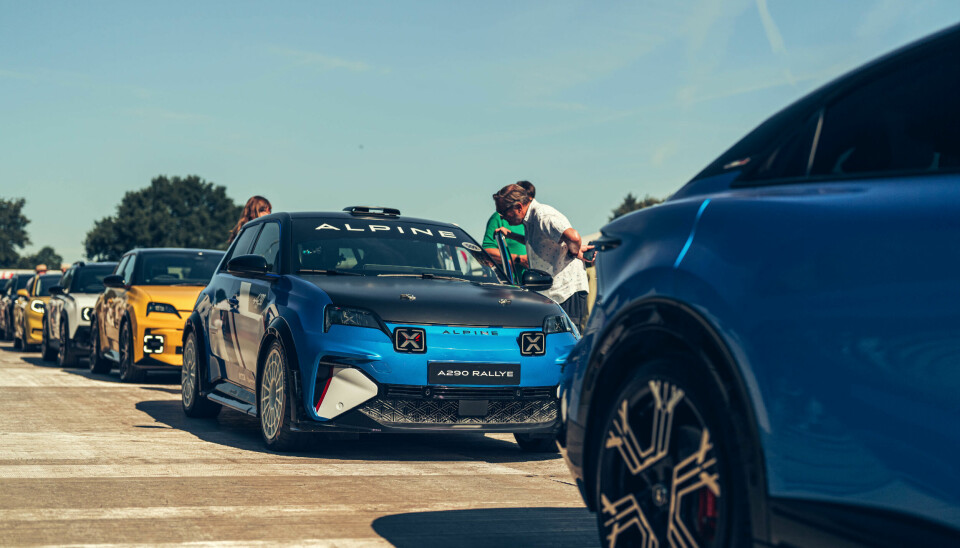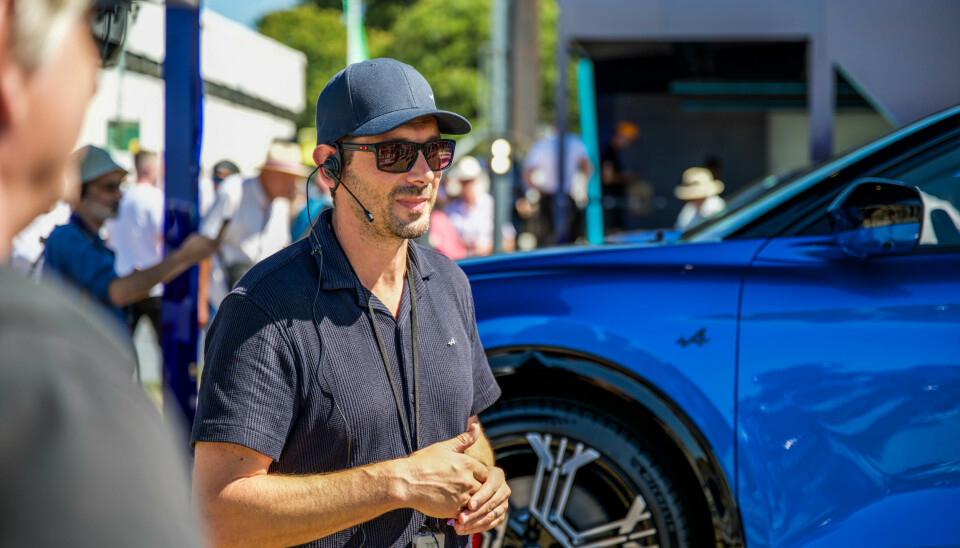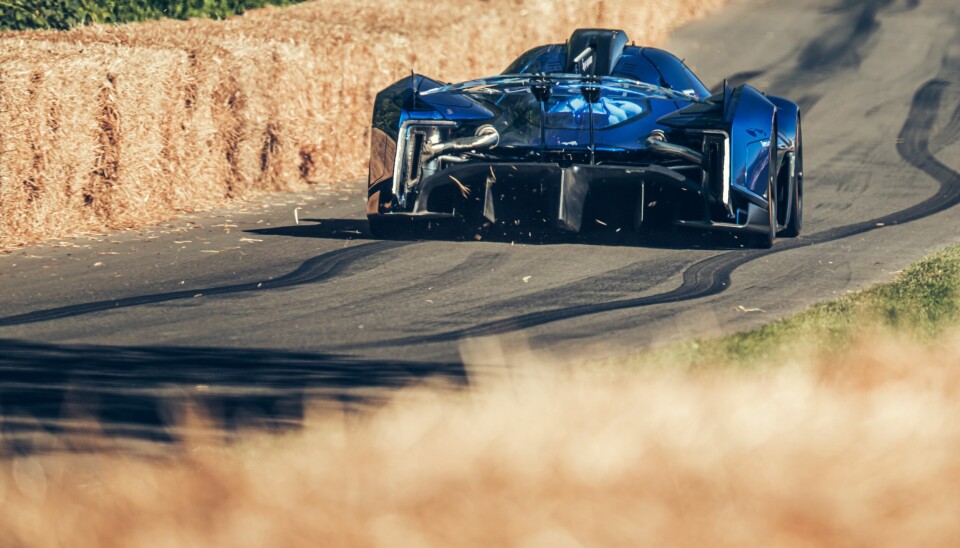Visible lightness

Design can influence aero in new ways, says Alpine design boss
Antony Villain reflects on his time with the brand so far and explains how motorsport and design have rethought how aero is executed
With the sun just starting to lose its sting and the backdrop of multiple new launches on the stand, not to mention the thumping music of Alpine's resident DJ and overtones of muscle cars flinging themselves up the hill, it is safe to say Antony Villain was in good spirits during our interview at Goodwood 2025.
And why wouldn't he be. The brand has worked not grown its portfolio from dedicated sportscars and hot hatches and now, with the A390, more of a premium fastback. Not only that, but also the broader motorsport efforts such as Alpenglow, the hydrogen-powered endurance hypercar that also found itself on the Goodwood paddock and track. Just over Villain's shoulder is the A290 Rallye, too, a special edition created to mark the brand's 70th anniversary.

It is more than a show car, and has been designed to meet current rally regulations with an eye to mixing it in a range of competitions; any that will have it, essentially. A roll cage, bucket seats and all-important hydraulic handbrake form the trifecta of core rally components, while uprated suspension, braking and drivetrain (LSD anyone?) complete the package. Power is delivered to the front axle, so plenty of opportunity for Scandi flicks and more of a distinct driving dynamic compared to most all-wheel drive performance EVs.
It continues a theme. Alpine has clearly evolved for the modern era of the automotive industry and sells cars to the masses. It is a business. But alongside that it continues to champion its heritage in motor racing, recently launching the A110 GT4 which has gone on to race (and win) on the track. It's a similar story with the A110 Rally and Rallye GT+ before it.
"We always have this mindset," Villain tells Car Design News. "But of course, when you turn electric, things start to get tougher because there are not a lot of categories where you can fit. So with the A290, we wanted to do something around rallying as we felt the car could fit this kind of sport."
You have to create your own momentum... I prefer designing now over 20 years ago
Not every design director has the chance to turn money spinners into wheel spinners, and Villain is keenly aware of the opportunity he has taken with the French outfit: "When I was kid, I wanted to do this job. This was my dream. So now I don't feel like I'm going to work. To be able to design these cars [A110, A290, A390) alongside the Alpenglow Hydrogen Le Mans car in the same workshop... It's crazy."
Indeed, it seems the Alpenglow has been particularly exciting to work on even amid the media storm of the brand's more recent launches. Here, the team managed to not only get a track weapon together but go off piste with how aerodynamic features were integrated and presented.

In essence, the plan was to create a rather different silhouette to what might usually be expected, utilising clear materials that from a distance or certain angles appear to be almost invisible. The floating rear wing (shown above) certainly seems a strong result and Villain is proud of the outcome. But it wasn't easy.
"You need a lot of airflow into the body, so there are a lot of open areas, but you also need lots of downforce and low drag. Sometimes, we want to show something spectacular, so even with all of this in mind, we thought: let's take the challenge to have a transparent wing and not this huge tall spoiler."
The first effort was a 40kg block of milled polycarbonate – anything but light – and so the next iteration was built with real constraints in mind. This meant the strategy had to be evolved to meet targets for driving range, downforce and overall weight. "We optimised everything, added a metallic structure for the fixation point of the two arms into the polycarbonate, and ultimately engineered everything to be much lighter."
The result is a wing that sits level with the rear wheel arches, further hiding it from view in side profile and front on. "That's the masterpiece," he continues. "We wanted to make it super subtle, super elegant and invisible. We've continued to work on it as well, because we really want to bring this to production; we already see some other manufacturers starting to play with that approach – I hope we inspired them – but I would be really happy if we were the first to put it into production."
Touching again on this period of his career in design, Villain gives a refreshing view on the current state of play as manufacturers lean more heavily into electrification, software and anything else that has disrupted the status quo. Rather than wishing they had been around different glory days over the decades, designers should celebrate where they are and embrace whatever they are faced with.
"You have to create your own momentum," he emphasises. "You never stay where you are. You always look for the next challenge, the next idea. Of course, in the 70s or 60s you were able to design Le Mans cars, but with the new regulations we have the chance to redesign them. So okay, the guys from the 70s had the chance to do their things, but we have the same chance to do ours now; and with new technologies, new materials, new possibilities. You just have to enjoy it. There are a lot of challenges in the car industry, but that's where creativity is needed. It's the right momentum and, to be honest, I prefer designing now compared to 20 years ago."











